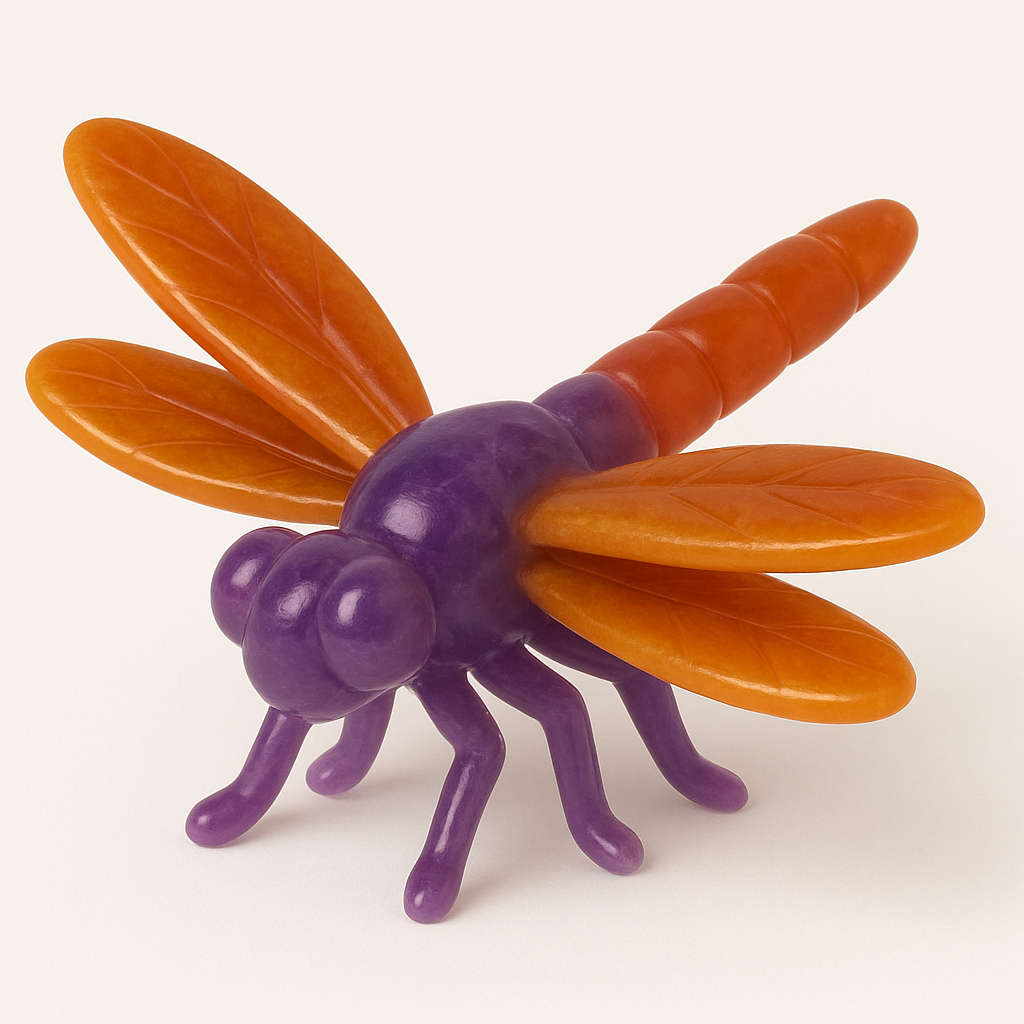
The Symbolism of Dragonflies
Share
In the shimmer of light reflected across still water, the dragonfly dances—its wings a blur of iridescent geometry, its path unpredictable, yet perfectly aligned with the moment. It touches the surface, then lifts again, never held by it. The dragonfly is not a creature of weight or struggle, but of lightness, agility, and perception refined by transformation. It embodies the lesson of how one may move through the world with speed, grace, and continual renewal.
To contemplate the dragonfly is to witness the essence of spiritual adaptability—the capacity to remain in motion while grounded in stillness, to shift direction with elegance, and to navigate the boundaries between water, air, and light.
Carriers of Light in Symbolic Memory
Across the cultures of this sphere, the dragonfly is revered not for its strength, but for its subtle power, its ability to appear suddenly, flash with color, and disappear—leaving behind only the impression of ephemeral beauty and motion aligned with vision.
In Japanese tradition, the dragonfly is a symbol of courage, happiness, and victory, yet these are not achieved through force, but through focus and precision. It is also associated with the samurai—beings who move not emotionally, but with inner clarity.
Among many Indigenous peoples of the Americas, the dragonfly is seen as a messenger of dreams, a carrier between dimensions, and a sign of the soul’s evolution. It may represent ancestral guidance, or the arrival of insight from beyond the veil.
In every cultural current, the dragonfly brings a message: that transformation need not be heavy, and that truth, when seen clearly, moves fast and leaves no disturbance.
Behavior of Light and Direction
The dragonfly lives first in water—as a nymph, unseen and submerged—then emerges into the air, transformed, weightless, and swift. This passage from one realm to another is not gradual. It is total, and yet it requires no violence. It is a natural unfolding, a shedding of one way of being for another.
In flight, the dragonfly defies linearity. It can hover, dart, reverse, or rise—all with effortless command. It is master of its movement, not bound by any single direction. It does not act from reflex, but from total spatial awareness.
Its wings, delicate yet powerful, reflect the ability to move through multiple planes of perception—touching the world, yet never entangled in it. Its eyes, vast and multifaceted, suggest a vision not bound to one truth, but capable of perceiving layers of reality simultaneously.
Thus, the dragonfly becomes a symbol of expanded perception, of transformation without loss, and of the beauty that arises when one allows energy to be both precise and free.
Resonance with the Energy Centers
The dragonfly resonates primarily with the indigo-ray energy center—the third eye, or the center of inner vision, insight, and multidimensional perception. Its ability to see in all directions, to maneuver through space with intuitive certainty, and to live between realms reflects an energy that moves not through intellect, but through direct knowing.
This indigo resonance is not heavy or mystical in appearance—it is light, quick, and exact. The dragonfly does not contemplate—it acts from vision that is already clear. This is the path of the adept: not lost in abstraction, but moving with purpose shaped by insight.
There is also a secondary resonance with the orange-ray energy center—the sacral chakra, which governs creativity, motion, sensual expression, and individual emotional energy. The dragonfly, in its iridescence and fluidity, embodies the balance of personal joy and emotional grace, allowing expression without disruption, beauty without attachment.
Together, these rays—indigo and orange—weave the energy of a being who sees deeply and moves freely, who transforms often but never loses the essence of self.
The Flight of Clear Perception
The dragonfly teaches that lightness is not absence of depth, but the sign of wisdom unburdened. It invites the seeker to transform—not once, but again and again—each time shedding that which is no longer needed, and rising into greater clarity, greater agility.
To walk with the dragonfly is to remain awake in motion, to see the world not as fixed, but as fluid, and to respond not with fear, but with freedom rooted in presence.
The dragonfly touches the surface of the world
but lives in the space above it.
Its wings do not carry weight.
They carry truth refined by flight.